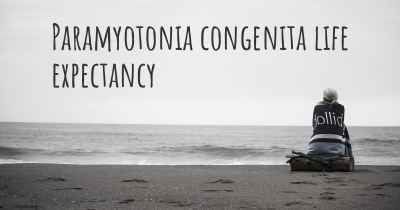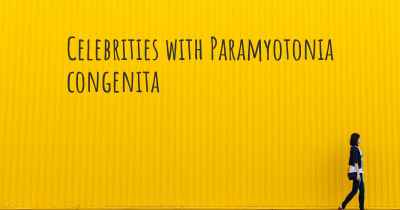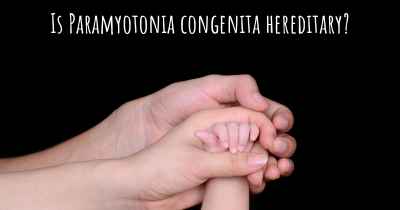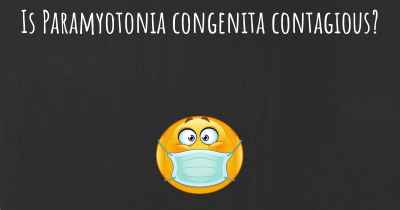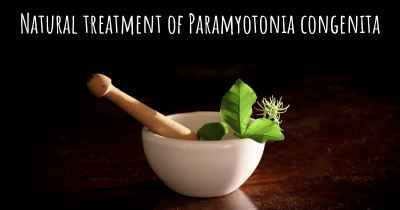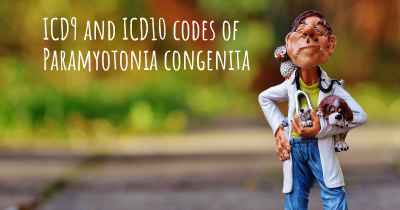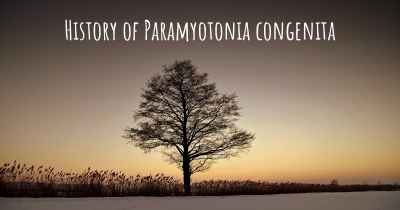Living with Paramyotonia congenita. How to live with Paramyotonia congenita?
Can you be happy living with Paramyotonia congenita? What do you have to do to be happy with Paramyotonia congenita? Living with Paramyotonia congenita can be difficult, but you have to fight to try to be happy. Have a look at things that other people have done to be happy with Paramyotonia congenita
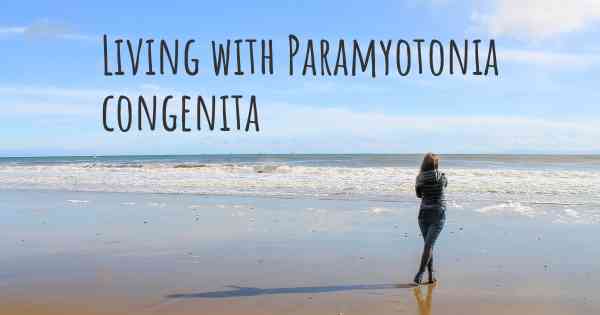
Living with Paramyotonia Congenita
Paramyotonia congenita is a rare genetic disorder that affects the muscles and causes muscle stiffness or weakness. Living with this condition can present challenges, but with proper management and support, individuals with Paramyotonia congenita can lead fulfilling lives.
Understanding Paramyotonia Congenita
Paramyotonia congenita is typically inherited in an autosomal dominant manner, meaning that if one parent carries the gene mutation, there is a 50% chance of passing it on to their children. The condition is caused by mutations in the SCN4A gene, which affects the functioning of sodium channels in muscle cells.
Managing Symptoms
Symptoms of Paramyotonia congenita can vary in severity and may include muscle stiffness, muscle weakness, and difficulty with muscle relaxation. These symptoms are often triggered by cold temperatures, stress, or physical exertion.
While there is no cure for Paramyotonia congenita, there are several strategies that can help manage symptoms:
- Avoiding triggers: Identifying and avoiding triggers such as cold temperatures or strenuous exercise can help minimize symptom flare-ups.
- Physical therapy: Working with a physical therapist who specializes in neuromuscular conditions can help develop an exercise program tailored to your needs. This can improve muscle strength and flexibility.
- Medications: In some cases, medications such as mexiletine or acetazolamide may be prescribed to help alleviate symptoms. It is important to work closely with a healthcare professional to determine the most appropriate medication and dosage.
- Heat therapy: Applying heat to affected muscles can help relax them and reduce stiffness. Warm baths, heating pads, or warm compresses can provide relief.
- Stress management: Stress can exacerbate symptoms, so finding effective stress management techniques such as meditation, deep breathing exercises, or engaging in hobbies can be beneficial.
Seeking Support
Living with Paramyotonia congenita can be challenging both physically and emotionally. It is important to seek support from healthcare professionals, family, and friends:
- Medical professionals: Regular check-ups with a neurologist or a specialist in neuromuscular disorders can help monitor your condition and adjust treatment plans as needed.
- Genetic counseling: If you are planning to have children, genetic counseling can provide valuable information about the risk of passing on Paramyotonia congenita and help you make informed decisions.
- Support groups: Connecting with others who have Paramyotonia congenita can provide a sense of community and understanding. Online support groups or local organizations can be excellent resources for sharing experiences and coping strategies.
- Family and friends: Educating your loved ones about Paramyotonia congenita can help them understand your condition better and provide the necessary support and accommodations.
Adapting Your Lifestyle
Living with Paramyotonia congenita may require certain lifestyle adjustments to ensure your well-being:
- Temperature control: Maintaining a comfortable temperature in your living environment can help minimize symptom flare-ups. Using warm clothing, blankets, or adjusting the thermostat can be helpful.
- Planning activities: Being mindful of your energy levels and planning activities accordingly can help prevent overexertion. Pace yourself and take breaks when needed.
- Assistive devices: Depending on the severity of your symptoms, assistive devices such as canes or mobility aids may be beneficial in improving mobility and reducing the risk of falls.
- Work and education: Communicating with your employer or educational institution about your condition can help them provide necessary accommodations, such as flexible schedules or ergonomic workstations.
Conclusion
Living with Paramyotonia congenita may present challenges, but with proper management, support, and lifestyle adjustments, individuals with this condition can lead fulfilling lives. It is important to work closely with healthcare professionals, seek support from loved ones and support groups, and make necessary adaptations to ensure your well-being. Remember, you are not alone, and there are resources available to help you navigate this journey.
